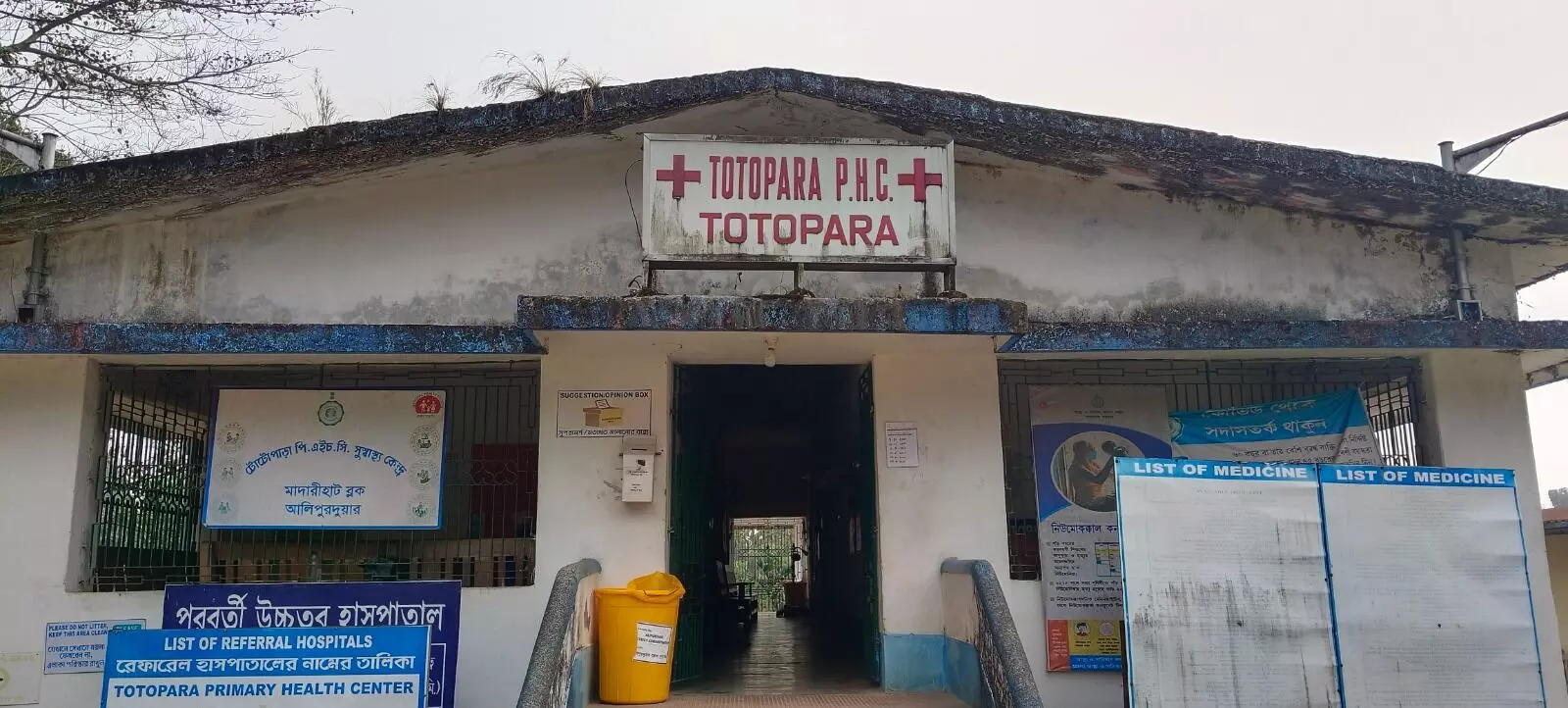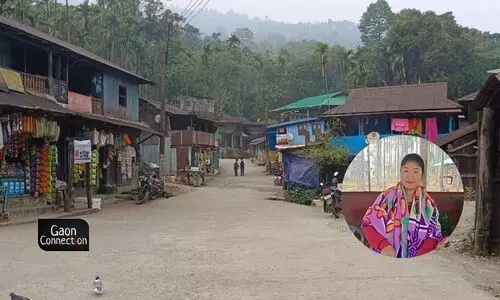Totapara (Alipurduar), West Bengal
Totopara village appears idyllic, nestled as it is in the lap of nature with the mountains and trees looming large around it, only three kilometres away from the Indo-Bhutan border. The village is unique as it is the last remaining village of the Toto tribe, a Particularly Vulnerable Tribal Group (PVTG). It is believed that only 1,763 Toto members are left in the world and most of them live in Totopara village in Alipurduar district of West Bengal.
Ashok Toto belongs to the Toto tribe and lives in Totopara, located about 700 kilometres from Kolkata, the state capital. To get to this remote village, six small and big streams have to be crossed. During the monsoon season, the village is completely marooned.
The 55-year-old tribal member, Ashok, said that his community was fighting for its survival. And without intervention from the government to help his people, they would go extinct.
“The early records of our presence are found from 1905, but we believe of living here in Totopara for over 300 years,” Ashok, told Gaon Connection.
Bakul Toto, secretary of the Toto Kalyan Samity, feared the next generation may lose their unique identity if the government did not step up to help them.
“We are just about 1,700 in number, in this area [Totopara], and there are more than 3,500 people from other places. They outnumber us and we are battling for our survival,” Bakul said. In all there are 1,763 Totos in the world, and almost all of them live in this village, he added.
Totopara, a PVTG village
Totopara is located on the fringes of the Jaldapara National Park, a protected forest known for its population of tigers and gaur (Indian bison) in north Bengal.
In the remote village, most of the houses are built of tin and bamboo and are on a raised platform to keep the people safe from wandering elephants that frequently visit.
Also Read: Forests thrive in tribal areas. And that isn’t just coincidence
The Totos mostly cultivate areca nuts for their livelihood. But now, they fear that their identity will be completely wiped out at the influx of other communities in the land they believed was theirs.
“The state government had allocated land to about 190 Toto families in the 1970s, but the land was taken away by the outsiders who built houses. We launched a movement for our land in February last year and wrote to the government requesting them to clearly demarcate our land. A survey was carried out in the middle of last year and we are expecting the result soon,” Bakul said.
Also Read: BRLF releases the first Tribal Development Report on the Adivasi communities of central India
Dearth of basic amenities
There is a primary health centre (PHC) in Totopara, but it is woefully under equipped. “The worst affected are the women who have to travel nearly 35 kilometres to the nearest district hospital at Alipurduar to deliver their babies,” Suktara Toto, a tribal inhabitant who also sells foodstuffs, told Gaon Connection.

There are no vehicles to be seen in the vicinity of the village, roads are bad, and expecting mothers prefer to move to the hospital a few days before their delivery date, the 38-year-old Suktara, said.
“Doctors do not want to stay here for more than a few months and seek transfers soon after they come here,” a PHC staff member who requested anonymity, told Gaon Connection. “A pharmacist is treating patients and dispensing medicines as the doctor is out on training for more than a week,” he added.
Also Read: The Long Wait: 16 years on, only 50% claims settled under the Forest Rights Act
There is no lab equipment, no X Ray machines and patients who have a serious illness are referred to far flung hospitals, according to the PHC staff member.
The government school in Totopara is also severely understaffed. Though the school is up to the 12th standard, there are just seven teachers handling all classes.
“The seven teachers include the teacher-in-charge who has to also take care of administrative responsibilities. We are finding it difficult to run the school and have to rush from one class to another without taking a break,” Annapurna Charkarborty, a para teacher, told Gaon Connection.
“The staff quarters for the teachers are not in good condition and we have to travel several kilometres to reach the school every day. It becomes almost difficult to come here during monsoon when the water bodies are swollen. At the same time there is a dearth of potable water in school which has to be brought from elsewhere,” she added.
Totopara is facing a severe drinking water crisis as most of the natural streams have become dry due to mining in nearby Bhutan. Only a few streams remain that provide the inhabitants with water.
“We have connected long pipes from a stream in the hills for drinking purposes but during the rains, the stream water turns muddy. We have no option but to drink that and as a result we fall ill,” Probin Toto, a 34-year-old inhabitant of Totopara, told Gaon Connection.
When Gaon Connection sought the views of a government official on the matter of Totopara and its people, a senior government official on condition of anonymity said, “The land survey was done last year and the report has been submitted. We are awaiting the response from higher ups,” she said, adding that she was not authorised to speak to the media.



















